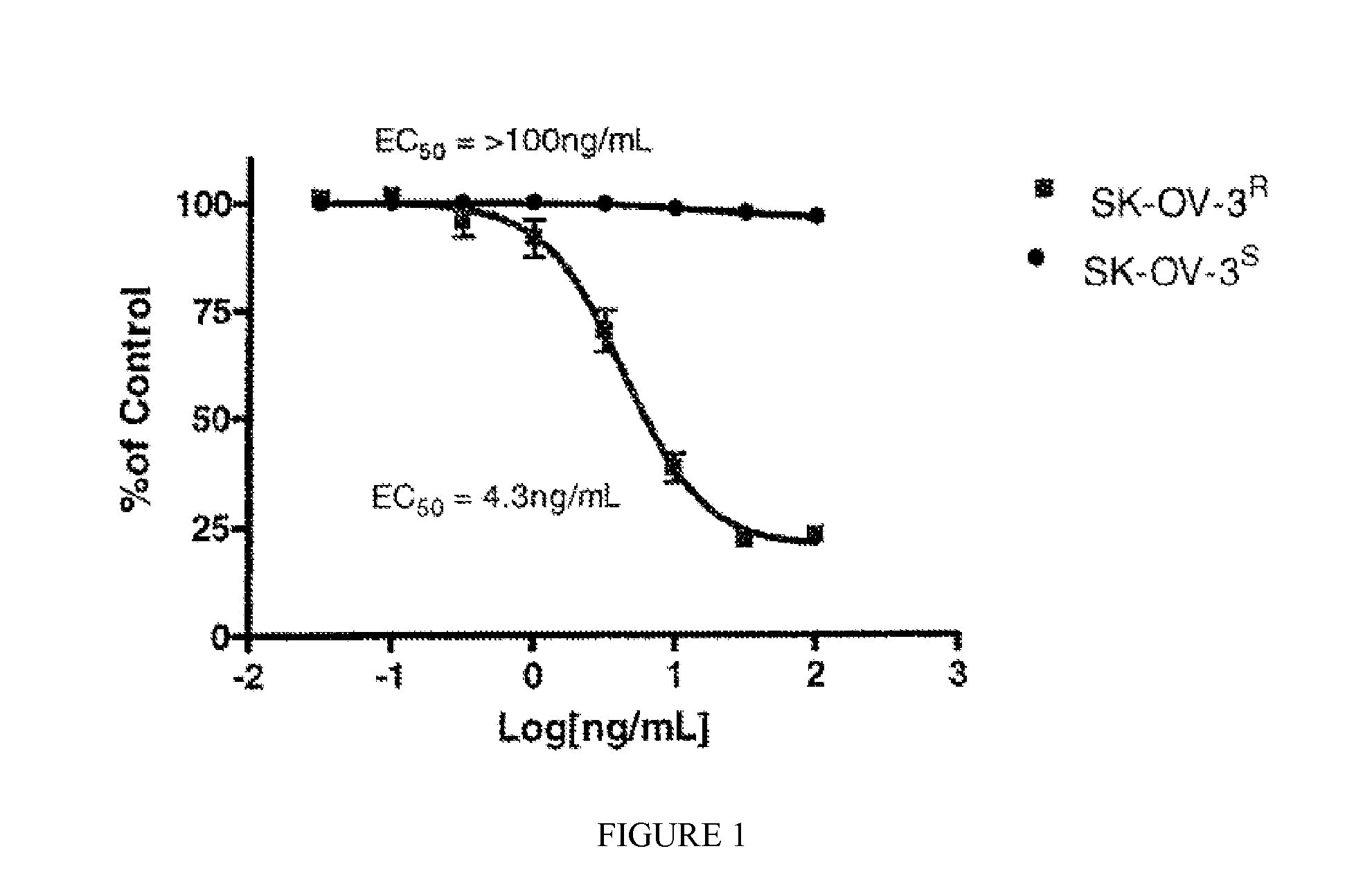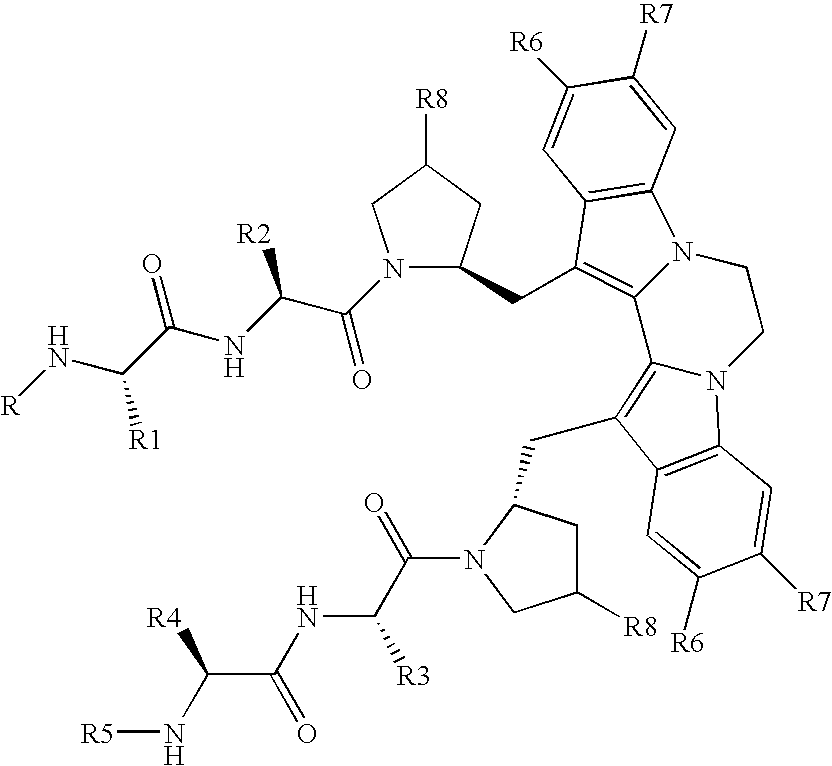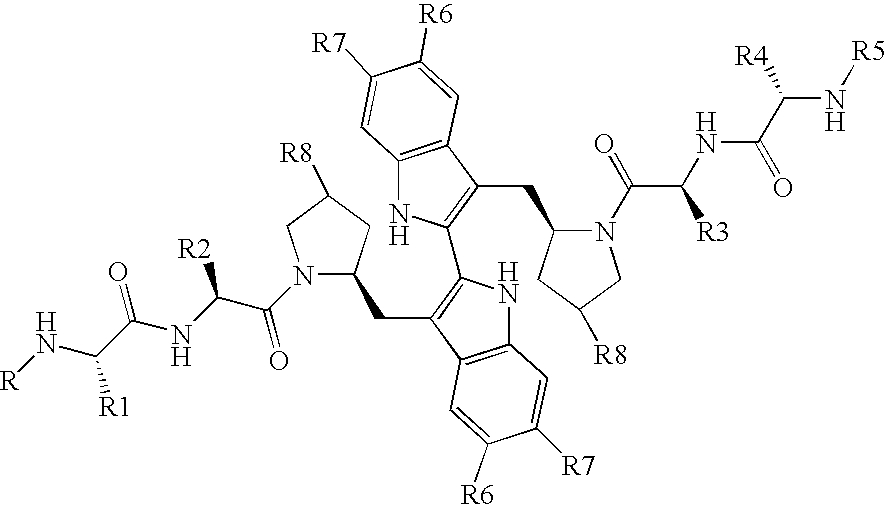Treatment of proliferative disorders
a proliferative disorder and enzyme technology, applied in the field of treatment of proliferative disorders, can solve the problems of cell death, affecting the ability of enzymes affecting cell replication, and affecting the ability of cells to repair damaged dna,
- Summary
- Abstract
- Description
- Claims
- Application Information
AI Technical Summary
Benefits of technology
Problems solved by technology
Method used
Image
Examples
Embodiment Construction
[0020]This invention relates to the discovery that compounds that bind and thereby degrade cIAP-1 hereinafter referred to as cIAP-1 Antagonists, are particularly useful for the treatment of proliferative disorders. In one aspect of the invention, such compounds are useful in the treatment of cancers, such as, but not limited to, bladder cancer, breast cancer, prostate cancer, lung cancer, pancreatic cancer, gastric cancer, colon cancer, ovarian cancer, renal cancer, hepatoma, melanoma, lymphoma, sarcoma, and combinations thereof. In another aspect, such compounds act as chemopotentiating agents. The term “chemopotentiating agent” refers to an agent that acts to increase the sensitivity of an organism, tissue, or cell to a chemical compound or treatment, namely, “chemotherapeutic agents” or “chemo drugs” or radiation treatment.
[0021]In addition to apoptosis defects found in tumors, defects in the ability to eliminate self-reactive cells of the immune system due to apoptosis resistanc...
PUM
| Property | Measurement | Unit |
|---|---|---|
| temperature | aaaaa | aaaaa |
| pH | aaaaa | aaaaa |
| resistance | aaaaa | aaaaa |
Abstract
Description
Claims
Application Information
 Login to View More
Login to View More - R&D
- Intellectual Property
- Life Sciences
- Materials
- Tech Scout
- Unparalleled Data Quality
- Higher Quality Content
- 60% Fewer Hallucinations
Browse by: Latest US Patents, China's latest patents, Technical Efficacy Thesaurus, Application Domain, Technology Topic, Popular Technical Reports.
© 2025 PatSnap. All rights reserved.Legal|Privacy policy|Modern Slavery Act Transparency Statement|Sitemap|About US| Contact US: help@patsnap.com



